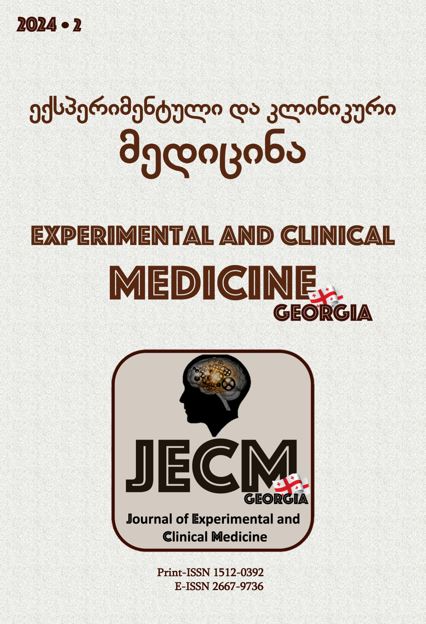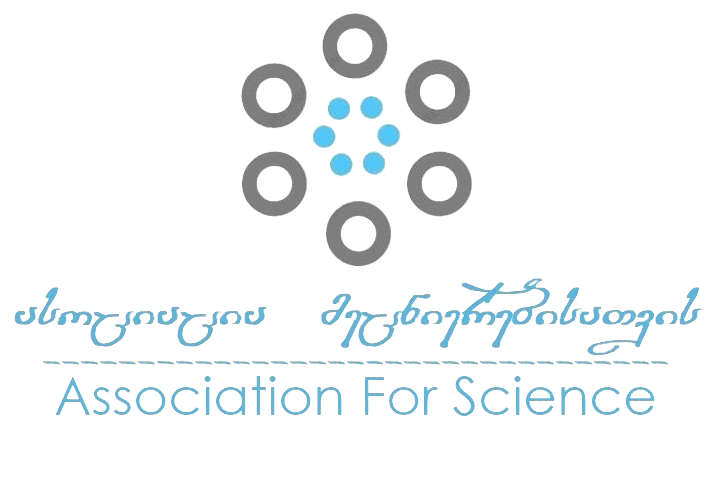EFFECT OF STATINS ON THE LIPID PROFILE AND BIOCHEMICAL PARAMETERS IN THE EXPERIMENTAL MODELS OF HYPERLIPIDEMIA IN RATS
DOI:
https://doi.org/10.52340/jecm.2024.02.13Keywords:
Statins, Lipid Profile, Experimental Models, HyperlipidemiaAbstract
It is known that ischemic heart disease (IHD) is the most common cause of death worldwide. The most important risk factor for the development of IHD is hyperlipidemia, the correction of which reduces the number of cases of IHD development by 21-43%. Statins play a leading role in the treatment of hyperlipidemia and their use is increasing every year, due to their high efficiency and safety. However, as statin use increases, so does the incidence of side effects such as liver dysfunction and myopathy. The purpose of the research was to investigate the effect of statins on the lipid spectrum (CHOL, LDL, HDL, TRIG) and basic biochemical blood parameters (ALT, AST, bilirubin, alkaline phosphatase, creatinine, urea, creatinine kinase, glucose) in experimental hyperlipidemia in rats. The experiments were carried out on mature male rats of the white Wistar breed (n=40). The results of the study showed that the experimental hyperlipidemia method we used reliably increases lipids in blood and this method can be used to study the effectiveness and safety of statins; statins improve the plasma lipid spectrum both in experimental hyperlipidemia and in intact animals, but more significantly in hyperlipidemia; atorvastatin significantly worsens biochemical markers of liver function (ALT, AST) both in comparison with intact animals and with hyperlipidemia, which indicates hepatocyte cytolysis; Atorvastatin does not reliably alter the biochemical indicators of liver cholestasis (bilirubin, alkaline phosphatase), indicators of kidney function (creatinine, urea) and glucose levels, but it does significantly increase the level of creatine kinase, one of the indicators of skeletal muscle tone, both in intact animals and with hyperlipidemia.
Downloads
References
Aladeen Alloubani, Refat Nimer, Rama Samara. Relationship between Hyperlipidemia, Cardiovascular Disease and Stroke: A Systematic Review. Current Cardiology Reviews 2021;17(6):e051121189015. Pages: 15, doi: 10.2174/1573403X16999201210200342
American Heart Association. Cardiovascular disease statistics. 2006 [Accessed January 1, 2007]. Available at: http://www.americanheart.org/presenter.jhtml?identifier=4478
Benjamin EJ, Virani SS, Callaway CW, et al. Heart Disease and stroke statistics—2018 update: a report from the American Heart Association. Circulation. 2018;137(12):e67–492. https://doi.org/10.1161/CIR.00000 00000 00055 8.
British Heart Foundation statistics website. CVD mortality in Europe. Mar 312005 [Accessed January 1, 2007]. Available at: http://www.heartstats.org/topic.asp?id=7537.2.
CDC. High cholesterol facts. Centers for Disease Control and Prevention; 2017. https://www.cdc.gov/cholesterol/facts.htm. Accessed 12 Sep 2018.
F.L.J. Visseren, F. Mach, Y.M. Smulders et al. 2021 ESC guidelines on cardiovascular disease prevention in clinical practice. Eur. Heart J., 42 (2021), pp. 3227-3337, 10.1093/eurheartj/ehab484
Gibson K, Rindone JP. Experience with statin use in patients with chronic hepatitis C infection. Am J Cardiol. 2005;96(9):1278-1279.
Gillett RC Jr, Norrell AE: Considerations for safe use of statins: liver enzyme abnormalities and muscle toxicity. Am Fam Physician, 2011 Mar 15;83(6):711-716.
Grundy SM, Cleeman JI, Bairey CN, et al; Coordinating Committee ofthe National Cholesterol Education Program, Endorsed by the National Heart,Lung, and Blood Institute, American College of Cardiology Foundation, andAmerican Heart Association. Implications of recent clinical trials for the NationalCholesterol Education Program Adult Treatment Panel III Guidelines [published correction appears in Circulation. 2004;110(6):763]. Circulation.2004;110(2):227-239
Halcox JP, Banegas JR, Roy C, et al. Prevalence and treatment of atherogenic dyslipidemia in the primary prevention of cardiovascular disease in Europe: EURIKA, a cross-sectional observational study. BMC Cardiovasc Disord. 2017;17(1):160. https://doi.org/10.1186/s1287 2-017-0591-5.
Hamid Mollazadeh , Erfan Tavana , Giovanni Fanni , et al. Effects of statins on mitochondrial pathways J Cachexia Sarcopenia Muscle. 2021 Apr;12(2):237-251.DOI: 10.1002/jcsm.12654
Hassan S., Abd El-Twab S., Hetta M., Mahmoud B. Improvement of lipid profile and antioxidant of hypercholesterolemic albino rats by polysaccharides extracted from the green alga Ulva lactuca Linnaeus. Saudi Journal of Biological Sciences, 18(4), 2011, 333-340
Jimmy Jose. Statins and its hepatic effects Newer data, implications, and changing recommendations. J Pharm Bioallied Sci. 2016 Jan-Mar;8(1):23-28. doi: 10.4103/0975-7406.171699.
Ruxandra-Nicoleta Horodinschi , Ana Maria Alexandra Stanescu , et al. Treatment with Statins in Elderly Patients. Medicina (Kaunas). 2019 Oct 30;55(11):721. doi: 10.3390/medicina55110721.
Silvia Attardo , Olimpia Musumeci , Daniele Velardo , Antonio Toscano. Statins Neuromuscular Adverse Effects. Int J Mol Sci. 2022 Jul 28;23(15):8364. doi: 10.3390/ijms23158364.
Stein EA. The power of statins: aggressive lipid lowering. Clin Cardiol. 2003;26(4) 25– 31
Sung-Jin Hong , Yong-Joon Lee , Seung-Jun Lee , Bum-Kee Hong , Woong Chol Kang, et al Treat-to-Target or High-Intensity Statin in Patients With Coronary Artery Disease: A Randomized Clinical Trial. JAMA. 2023;329(13):1078-1087. doi:10.1001/jama.2023.2487
Pierandrea Vinci , Emiliano Panizon , Letizia Maria Tosoni , et al. Statin-Associated Myopathy: Emphasis on Mechanisms and Targeted Therapy. J. Mol. Sci. 2021, 22(21), 11687, doi.org/10.3390/ijms222111687
WHO. World health statistics 2018: monitoring health for the SDGs. WHO. http://www.who.int/gho/publications/world_health_stati stics /2018/en/. Accessed 12 Sep 2018.
Yu Si Yao, Tu Di Li & Zhi Huan Zeng. Mechanisms underlying direct actions of hyperlipidemia on myocardium: an updated review. Lipids Health Dis.2020 Feb 8;19(1):23. doi:10.1186/s12944-019-1171-8.






